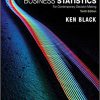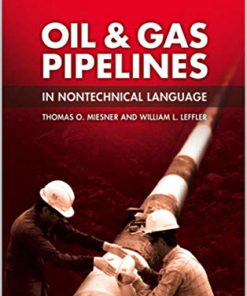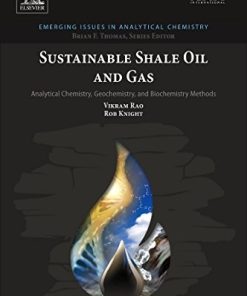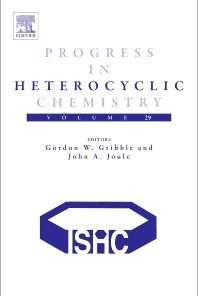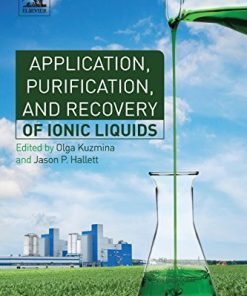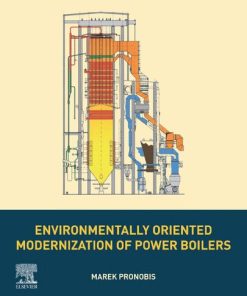(eBook PDF) Economically and Environmentally Sustainable Enhanced Oil Recovery
$50.00 Original price was: $50.00.$35.00Current price is: $35.00.
(eBook PDF) Economically and Environmentally Sustainable Enhanced Oil Recovery – Instant Download
(eBook PDF) Economically and Environmentally Sustainable Enhanced Oil Recovery – Digital Ebook – Instant Delivery Download

Product details:
- ISBN-10 : 1119479096
- ISBN-13 : 978-1119479093
- Author: M. R. Islam (Author)
There have been many books on the topic of Enhanced Oil Recovery (EOR) over the last 100 years. They all, however, focus on how to recover more oil faster, taking a rather myopic approach. The solutions presented all work fantastically in theory and even in the laboratory, but each fails to produce results in the field with long-term success. The petroleum industry is almost resigned to the belief that for an EOR technique to be successful, it must be propped up with public funds or must compromise environmental integrity. In line with modern engineering practices, previous books discuss how existing technologies can be tweaked to accommodate for any shortcomings that just came to light. This book is unlike any other book on the topic of recovery in particular and engineering in general.
Table contents:
1 Introduction 1
1.1 Opening Remarks 1
1.2 The Prophets of the Doomed Turned Into Scientists 1
1.3 Paradigm Shift in Sustainable Development 2
1.4 Questions Answered in This Book 5
2 Petroleum in the Big Picture 11
2.1 Introduction 11
2.2 Pre-Industrial Revolution Period 12
2.3 Beginning of the Petroleum Culture 36
2.4 The Information Age 46
2.5 The Energy Crisis 52
2.6 Conclusions 67
3 Natural Resources of the Earth 69
3.1 Introduction 69
3.2 Characteristic Time 69
3.3 Organic and Mechanical Frequencies 77
3.4 The Nature of Material Resources 89
3.5 The Science of Water and Petroleum 90
3.6 Nitrogen Cycle: Part of the Water/Nitrogen Duality 138
3.7 Conclusions 175
4 Growth Potential of Petroleum Reservoirs 177
4.1 Introduction 177
4.2 Toward Decarbonization 177
4.3 The Current State of the World of Oil and Gas 181
4.4 World Oil and Gas Reserve 205
4.5 Organic Origin of Petroleum 249
4.6 Scientific Ranking of Petroleum 252
4.7 Reserve Growth Potential of an Oil/Gas Reservoir 264
4.8 Conclusions 318
5 Fundamentals of Reservoir Characterization in View of Enhanced Oil and Gas Recovery 321
5.1 Introduction 321
5.2 Role of Fractures 322
5.3 Natural and Artificial Fractures 328
5.4 Developing Reservoir Characterization Tools for Basement Reservoirs 339
5.5 The Origin of Fractures 346
5.6 Seismic Fracture Characterization 353
5.7 Reservoir Characterization During Drilling 363
5.8 Reservoir Characterization with Image Log and Core Analysis 379
5.9 Major Forces of Oil and Gas Reservoirs 415
5.10 Reservoir Heterogeneity 433
5.11 Special Considerations for Shale 448
5.12 Conclusions 450
6 Future Potential of Enhnced Oil Recovery 451
6.1 Introduction 451
6.2 Background 454
6.3 Types of EOR 461
6.4 Enhanced Oil Recovery in Relation to Oil and Gas Reserve 469
6.5 Current Oil Fields 491
6.6 Need for EOR 516
6.7 Conclusions 522
7 Greening of Enhanced Oil Recovery 525
7.1 Introduction 525
7.2 Carbon Dioxide Injection 528
7.3 Thermal Methods 544
7.4 Chemical Methods 574
7.5 Gas Injection 609
7.6 Recap of Existing EOR Projects 621
7.7 Downhole Refinery 657
7.8 Conclusions 662
8 Toward Achieving Total Sustainability EOR Operations 663
8.1 Introduction 663
8.2 Issues in Petroleum Operations 664
8.3 Critical Evaluation of Current Petroleum Practices 673
8.4 Petroleum Refining and Conventional Catalysts 678
8.5 Current Practices in Exploration, Drilling and Production 689
8.6 Challenges in Waste Management 692
8.7 Greening of EOR Operations 693
8.8 Zero-Waste Operations 710
8.9 Conclusions 714
9 Conclusions 717
9.1 The Task 717
9.2 Conclusions 718
References and Bibliography 725
Index 787
People also search:
|
enhanced oil recovery fracking
enhanced oil recovery methods
enhanced oil recovery companies
enhanced oil recovery and carbon capture
nhanced oil recovery and carbon capture
|
You may also like…
Engineering
Application, Purification, and Recovery of Ionic Liquids 1st Edition Olga Kuzmina – eBook PDF
Engineering
Environmentally Oriented Modernization of Power Boilers 1st Edition Marek Pronobis – eBook PDF
Earth Sciences - Reference


